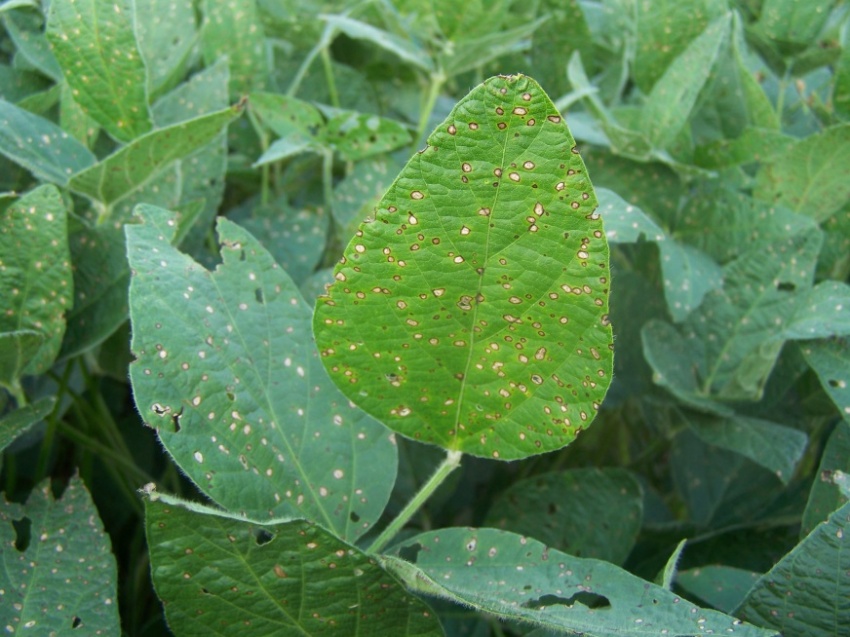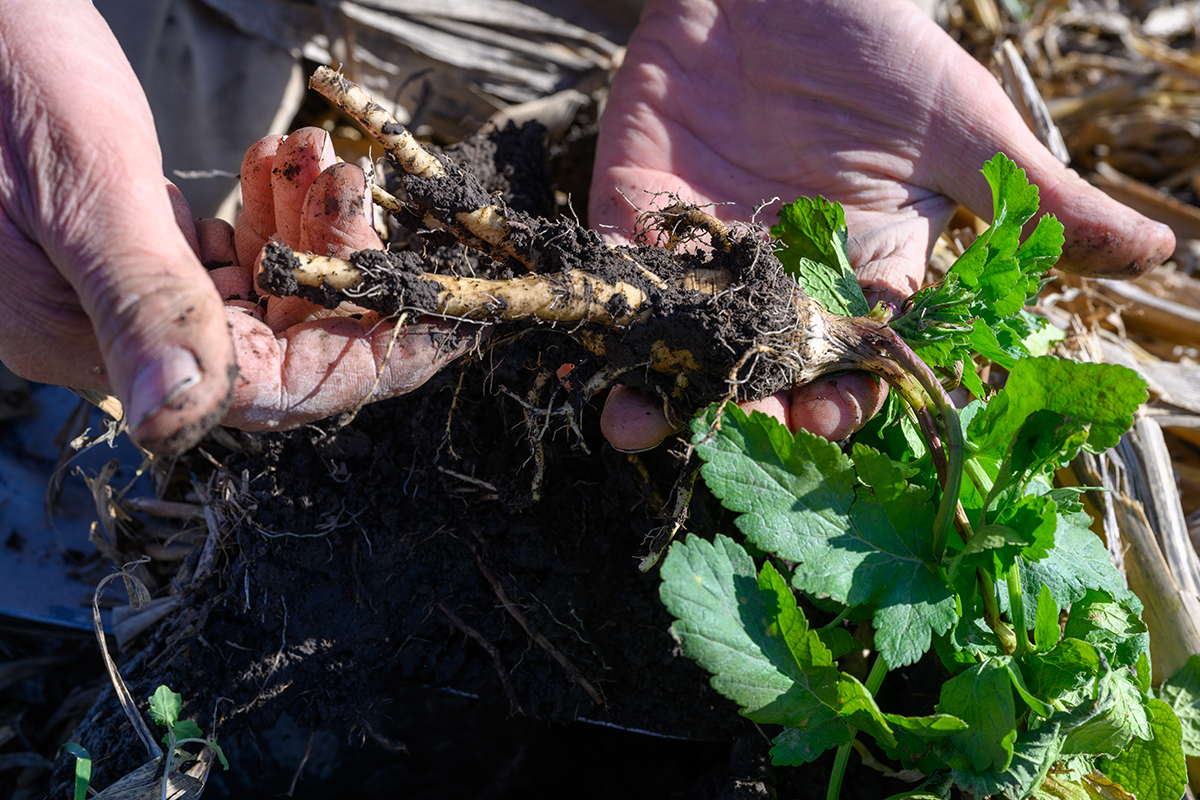Fend Off Fungicide Resistance

Four soybean-production practices to help keep diseases from spreading
Until recently, researchers have not considered fungicide-resistant plant pathogens to be a major issue in corn and soybean production. That’s because most farmers do not treat their corn and soybean acreage with a fungicide, and those who do make just one application. However, with one fungicide-resistant pathogen already developed, and more perhaps on the way, a plant pathologist encourages farmers to start thinking about new ways of managing these yield robbers.
University of Illinois Plant Pathology Professor Carl Bradley says Cercospora sojina, the pathogen that causes frogeye leaf spot in soybeans (pictured above), has developed resistance to one set of fungicides. Bradley says continued use of fungicides could lead to other diseases developing resistance.
Resistance happens naturally. Every time a farmer treats a field with a fungicide, that treatment kills sensitive individuals, but resistant pathogens remain and reproduce. The scenario repeats over time until resistant pathogens are the norm rather than the exception.
“Continued use of the fungicide will continue to select out the fungicide-resistant individuals in the population,” Bradley explains. “Eventually, resistant individuals dominate the population and the effectiveness of the fungicide will be reduced.”
Bradley offers four ways farmers can improve soybean production by proactively managing against fungicide resistance:
- Scout, and apply fungicides only when warranted. Fungicides applied more than once in a season offer a pathogen population more opportunities to develop resistance. And lots of applications over multiple years will improve those odds even more.
- Mix and rotate fungicide classes, especially if applying more than once per season. Applying fungicides with just one active ingredient presents a higher risk for resistance than using a mixture of fungicides from multiple groups.
- Follow the recommendations on the fungicide label.
- Use non-chemical methods of disease management, such as planting disease-resistant varieties and rotating crops.
For other guidelines, visit the Fungicide Resistance Action Committee’s website.



